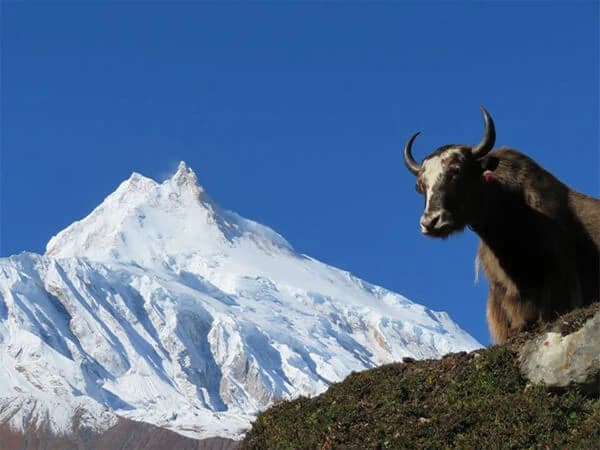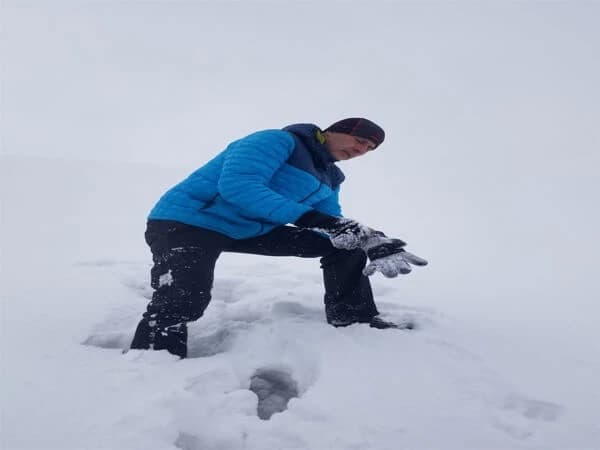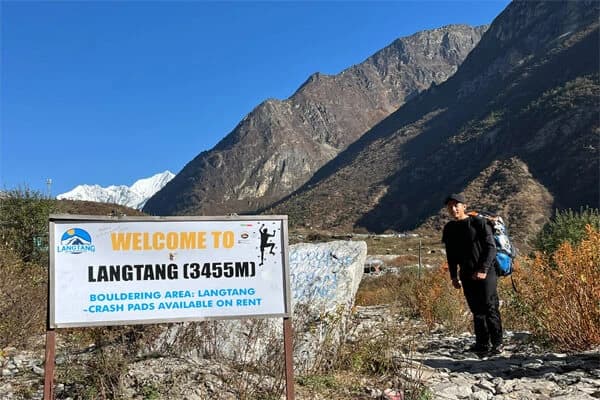The Manaslu Tsum Valley Trek is one of the most serene and stunning trek in Nepal. You pass through small towns, large rivers, snow-capped mountains, and peaceful woodlands. But the journey is not simple. We will discuss the Manaslu Tsum Valley Trek difficulty in this blog and give you an idea of what to expect.
This trek, which lasts between 18 to 22 days, ascends to a height of almost 5,000 meters in the Himalayas! Every day, you will spend many hours walking, sometimes on rough, narrow paths and other times uphill. There are not many stores or hospitals along the route because it is so far from large towns. It means you have to be strong, move carefully, and be ready.
Despite the Manaslu Tsum Valley trek difficulty, the journey is rewarding. In villages where few tourists visit, you will see yaks, snowy peaks, old monasteries, and hospitable locals. From this blog, you can learn how to prepare for this trek and whether it is the right choice for you. The right support, such as a professional guide, may turn even a challenging walk like this into an exciting and safe experience.
Manaslu Tsum Valley Trek overview
The Manaslu Tsum Valley Trek is a serene and lovely trek across Nepal's highlands. Despite being a part of the larger Manaslu region, Tsum Valley has a distinct atmosphere. Visitors come here to take in the serene surroundings, friendly locals, and historic monasteries.
Manaslu Tsum Valley trek distance and duration
The Manaslu Tsum Valley trek distance is about 177 to 190 kilometers. That would be equivalent to traveling for many days between towns. You will cross rivers, climb high hills, enter little mountain settlements, and travel through forests. You walk for about six to eight hours every day on the up-and-down trail.
The duration of the Manaslu Tsum Valley Trek is usually 18 to 22 days. The majority of trekkers begin their journey at Arughat, also known as Soti Khola. The trail then passes through tiny towns, rivers, and woodlands.
Known for its traditional Tibetan culture and stunning scenery, the journey takes you deep into the Tsum Valley, a secluded and serene region. Special permits are required to enter the valley because it is a restricted area. The trail then continues on to the Manaslu Circuit, which circles the magnificent Mount Manaslu, the eighth-highest mountain in the world, after passing through the Tsum Valley.
You cross high mountain crossings like the 5,160-meter (16,929-foot) Larkya La Pass along the Manaslu Circuit. The trek's highest and most difficult point is here.
Due to the length of the route, it often takes three weeks or longer, depending on your pace and days off. In order to thoroughly appreciate the journey and provide time for adequate acclimatization to the high altitudes, most trekkers prepare for 18 to 22 days, while some may finish a bit sooner or later.
The Manaslu Tsum Valley Trekking distance and duration is a demanding yet worthwhile experience for anyone hoping to witness breathtaking mountains, isolated communities, and a vibrant culture all in one remarkable journey.
Manaslu Tsum Valley Trek Challenges
The Manaslu Tsum Valley Trek is a strenuous physical test. Unlike a quick city stroll, this route is not simple. You should prepare yourself to walk for several hours each day, sometimes on rugged and hilly terrain. Let us take a closer look at what makes this walk physically challenging and how you may get ready.
Manaslu trek fitness requirements
You will walk for six to eight hours every day. That would be equivalent to walking nonstop from the morning till the late afternoon. The paths will put a lot of strain on your legs because they are uphill and downhill. On certain days, the ascents are extremely steep, requiring additional stamina.
You need to have high stamina because the walking days are long. This implies that in order to prevent excessive fatigue, your body must be strong and fit. To increase your strength before the trek, you can walk for a few hours in parks or hills. Doing workouts that benefit your lungs and legs is also beneficial.
Manaslu trek physical preparation
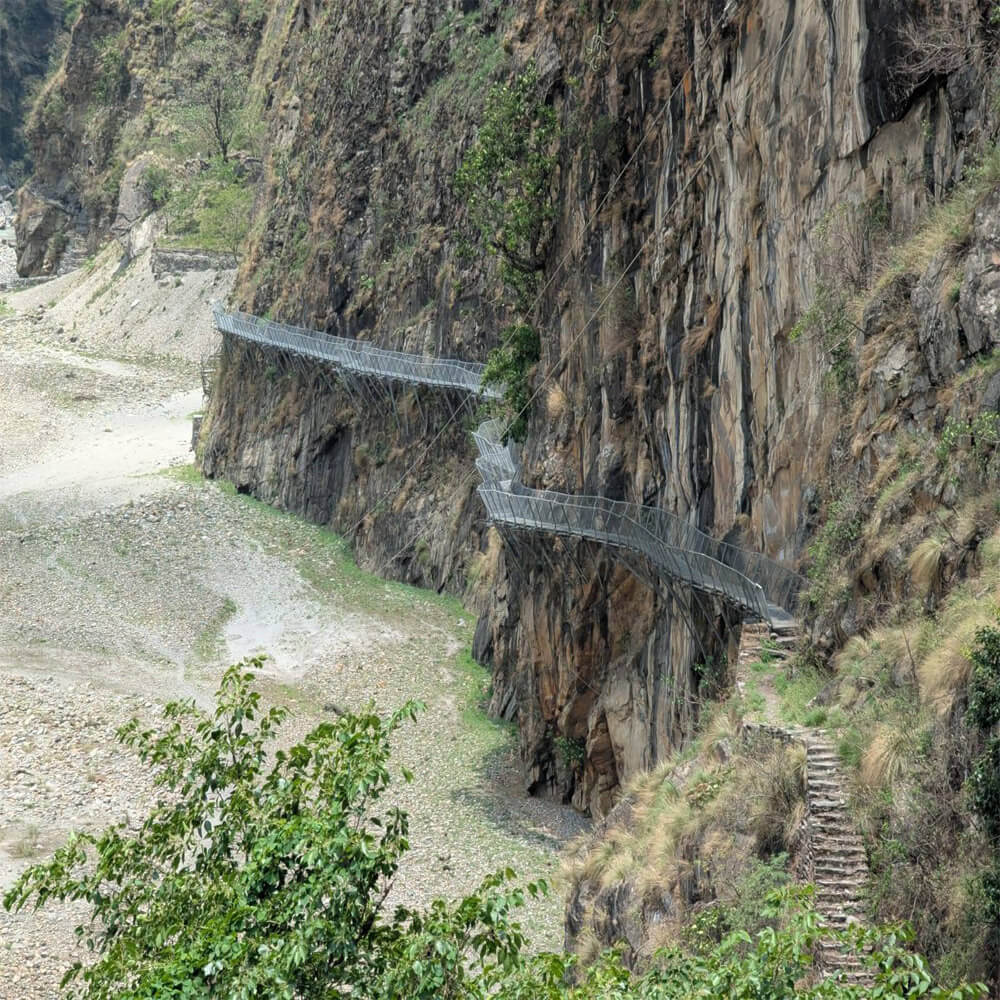
After climbing steep mountains, the path descends into valleys. These strenuous ascents and descents can be very taxing on your knees and muscles. Your heart beats more quickly and your breathing becomes more difficult when you go uphill. If you are not cautious, going downhill could cause knee pain.
As a result, a lot of trekkers utilize walking sticks, which improve balance and ease knee strain. On hilly sections, it is crucial to go gently and take tiny steps. Rushing could result in injury or extreme fatigue.
The Manaslu Tsum Valley Trek is physically demanding due to its steep terrain and lengthy walking distances. However, you may safely enjoy the stunning mountains if you plan ahead and take your time!
Manaslu Tsum Valley trek altitude issues
The air becomes thinner as you ascend higher into the mountains. There is therefore less oxygen available for breathing. On the Langtang Gosaikunda Trek, some locations are higher than 4,000 meters. Lauribina La Pass, at roughly 4,610 meters above sea level, is the highest point. Your body has to work harder to get enough oxygen at that height. People may have headaches, vertigo, or fatigue as a result of this.
We refer to this as altitude sickness. Anyone can experience it, even experienced trekkers. For this reason, it is crucial to take things gradually, stay hydrated, and take frequent breaks. Going up too fast can make you sick.
Tsum Valley trek acclimatization
In the high mountains, there are a few simple strategies to be safe. Walk slowly at first to allow your body to adjust to the height. We refer to this as acclimatizing. The majority of trekkers take a break at upper communities like Gosaikunda. This aids in your body's adaptation.
Additionally, you should consume a lot of water each day. Inform your guide or group immediately if you have a headache, feel lightheaded, or have trouble falling asleep. Altitude sickness manifests as these symptoms. Going down to a lower place is the best method to feel better if it gets worse.
A qualified guide from our agency who is familiar with these issues will help you. They will assess your emotional state and provide safety assistance. Yes, the mountains are high, but you can still enjoy the journey and maintain your health if you walk slowly, get enough sleep, and get the correct help.
Manaslu Tsum Valley Trekking Trail Conditions and Terrain
Manaslu Tsum Valley trekking Route conditions
The Manaslu Tsum Valley Trek paths pass through a variety of locations. There are narrow, rocky sections as well as broad, smooth ones. You will traverse hills, stone steps, dense forests,and bridges made of metal or wood. The path occasionally rises very high and occasionally descends sharply.
Additionally, you can come across open valleys, rivers, and waterfalls. You must exercise caution and walk slowly in certain areas because the path is adjacent to a cliff. Every day feels fresh and thrilling since the trail is constantly changing. Particularly in the rainy or dry seasons, some sections of the trek may become muddy or dusty.
Snow, Ice, and Other Challenges During Manaslu Tsum Valley Trek
Snow and ice may be visible during the colder months, particularly in the vicinity of Larkya La Pass (5,160 meters). These parts are freezing and really slick. You must wear warm clothing, sturdy walking shoes, and walk carefully. You can navigate the snowy areas securely with the aid of a guide.
The trails may be slick and teeming with leeches during the rainy season, which runs from June to August. In some locations, landslides may even occur. For this reason, the best seasons to visit are spring or fall.
Some trails offer the best vistas, despite their difficulty. There will be colorful villages, serene valleys, and towering mountains. Despite its difficulty, the trail is stunning and full of surprises!
Weather impact on Manaslu Tsum trek
In the mountains, the weather fluctuates greatly. Because of this, the Manaslu Tsum Valley Hiking may be easier or harder depending on the season. Let us examine how the seasons impact your stroll.
Spring and Autumn: Best season for Manaslu Tsum Valley trek
Trekking is most enjoyable from March to May in the spring and from September to November in the fall. The weather is sunny and clear during these periods. The mountains covered with snow are clearly visible, and the sky is beautiful.
Along the walk, rhododendrons and other flowers blossom in the spring. The weather is dry and cold in the fall. It is safer to cross high mountain passes during these seasons since there are less rain clouds. Along with meeting many of other trekkers, you will also experience cozy teahouses.
Winter and Monsoon: Harder and Risky
The winter months of December through February are extremely chilly. Snow blankets the Larkya La Pass trek, the highest point of the journey, and covers the paths. Walking on it can be risky and overly slick. It is possible that some teahouses are closed.
There is a lot of rain during the monsoon season, which runs from June to August. The paths get slick and muddy. In addition to leeches on the way, fog and clouds make it more difficult to see the mountains. In some places, landslides could block the trail.
For a simpler, safer, and more enjoyable trek, opt for spring or fall. Although they might be thrilling, winter and monsoon are far more challenging and require more planning and attention.
Logistics and Remoteness: What You Should Know
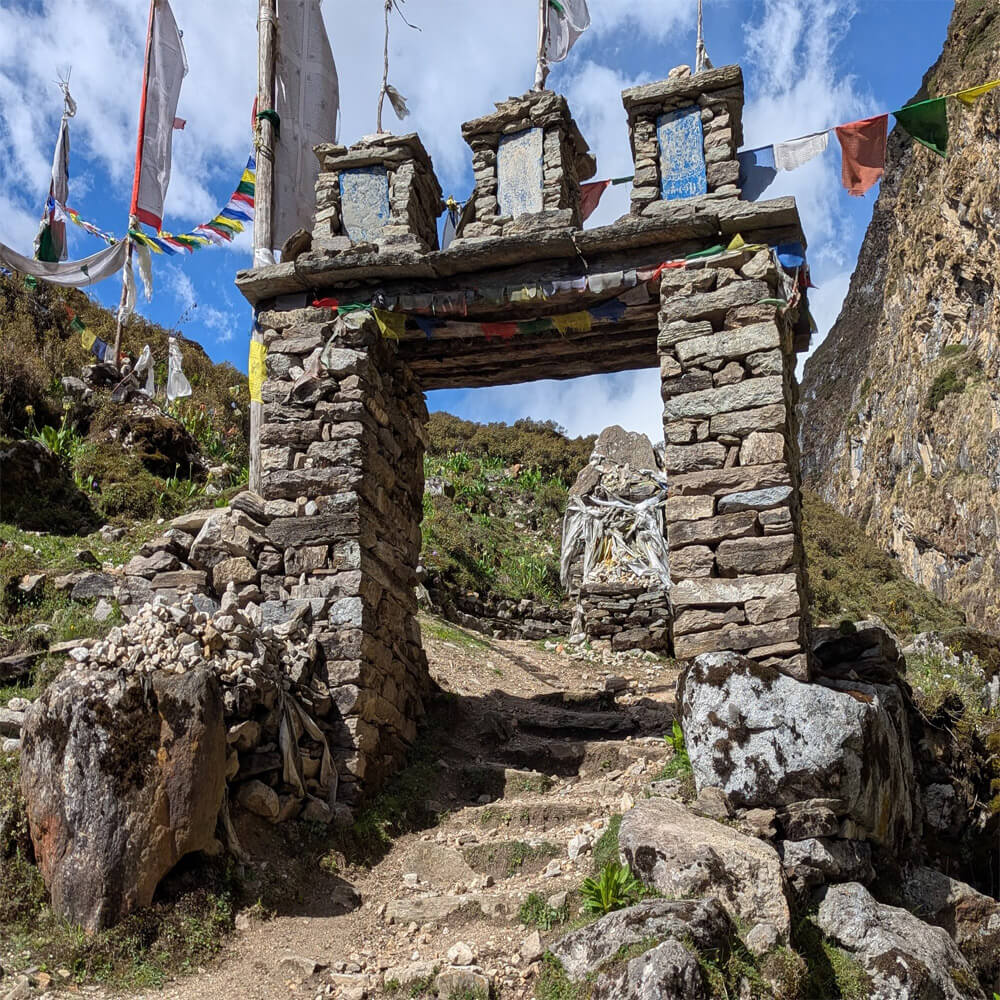
The Manaslu Tsum Valley Trek immerses you in Nepal's mountainous interior. Although it is relatively far from towns and cities, it is also very lovely. This implies that you must thoroughly prepare before leaving. Let us examine the factors that make the voyage remote and the things you should consider.
Very Few Shops or Hospitals
You will not come across many stores, hospitals, or large settlements while trekking in Nepal. There is not a hospital close by in case you get ill or injured. Because of this, it is crucial to have your own first aid bag with supplies including bandages, pain relievers, and high altitude medication. Because there are no ATMs, it is a good idea to pack extra supplies, warm clothing, and cash in case you need it. You can get food and a place to sleep at the teahouses, but do not expect fine dining or comfortable mattresses.
No Phones, No Internet in Many Places
Using Wi-Fi or making a phone call is simple throughout the city. However, internet is either very slow or unavailable during the walk, and your phone might not work. This implies that you will not be able to post pictures or make calls home immediately. Wi-Fi is available for a charge in some teahouses, however it is not always reliable. Telling your family that you will be offline for several days before to the trek is a good idea. The good news is that without your phone constantly buzzing, you will be able to appreciate nature more!
Although it is not a luxury trek, it is adventurous and serene. You will have a great time on your trip if you are ready for simple meals, peaceful evenings, and no internet.
Mental and Emotional Challenge
It takes roughly three weeks to complete the Manaslu Tsum Valley Trek. Being away from your home, loved ones, phone, and favorite meal for so long is quite a lengthy time. In many places along the trail, there are no large cities or internet. For several days, you could not have phone service. This implies that you can not always text or call individuals.
Additionally, you sleep in modest tea houses, which are tiny lodges with rudimentary mattresses and communal restrooms. Electricity may not always function, and some locations lack hot water. Vegetables, rice, and lentils called dal bhat are among the regional dishes you will eat virtually daily. The trail is devoid of burgers and pizza!
A Quiet and Special Experience
It is a fairly tranquil trek. On the walk, you will not see many other people. That may seem odd at first, but it also allows you to take a moment to reflect, take a breath, and take in the scenery. You pass through amiable villages where people still live the old-fashioned way, serene valleys, and dense forests. Locals will greet you with a grin and "Namaste."
The long walks, the cold, or exhaustion will make some days difficult. You do, however, get something lovely with each step, such as snow-capped mountains, crystal-clear rivers, or vibrant prayer flags. Ultimately, this journey makes you stronger, both physically and emotionally. It is a very special journey, yet it is quiet.
Who Can Do the Manaslu Tsum Valley Trek?
Although the ManasluTsum Valley Trek is a strenuous walk, it is enjoyable for those who prefer the outdoors and adventure. Strong, healthy individuals are ideally suited for this expedition. This trip will be easier for you if you can walk for several hours each day, climb hills, and carry a backpack. If you have previously completed a trek, such as Ghorepani or Langtang, it is even better. In this manner, you are already familiar with the sensation ofmountain trekking in Nepal.
This walk will be especially enjoyable for those who prefer peaceful settings, forests, large mountains, and discovering different cultures trekking trails. You can prepare by walking daily, even if you are not very strong at the moment. Spend a few hours practicing walking uphill and downhill. To strengthen your lungs and legs, you can also climb stairs or do some light running. Healthy eating and restful sleep also aid in your body's preparation.
How to Prepare to Encounter Manaslu Tsum Valley Trek difficulty?
The Manaslu Tsum Valley Trek may be too difficult for you if this is your first time trekking. Some days are lengthy and exhausting, and the trails are very high. There are fewer locations to stop for assistance, and the weather can change suddenly. This trek could be frightening at times if you are apprehensive about crossing bridges or traveling on small trails.
Before visiting, anyone with health issues or who is older should consult a doctor. Additionally, you might reconsider if you dislike basic meals, beds, or chilly weather. However, you can still have a good time if you plan beforehand, go slowly, and have a guide. Just keep in mind that it is a tranquil trip over the mountains, not a race.
Tips for trekking Manaslu Tsum Valley
The Manaslu Tsum Valley Trek is a lengthy and stunning trek through Nepal's mountains. About 18 to 22 days pass. You will witness serene landscapes, tiny mountain communities, and lofty snow-capped summits. But the journey is not simple. The following easy advice will help you have fun and safely complete the trek:
Prepare for the Trek
It is a long and difficult walk. Every day, you will walk for six to eight hours. There are paths that climb and descend hills. Before your trip, you can prepare by going for a walk or a trek close to your house.
Carry a Smart but Light Pack
Just bring the essentials: a water bottle, flashlight, sunscreen, warm clothing, sturdy trekking boots, and a few snacks. Remember to bring a sleeping bag and a rain jacket. In the highlands, the weather can change quickly.
Take it slow and take frequent breaks.
As you ascend, the air becomes thinner. You can get fatigue or altitude sickness. Take pauses and walk slowly. Be sure to stay hydrated. Do not hurry.
Respect the Culture and People of the Area
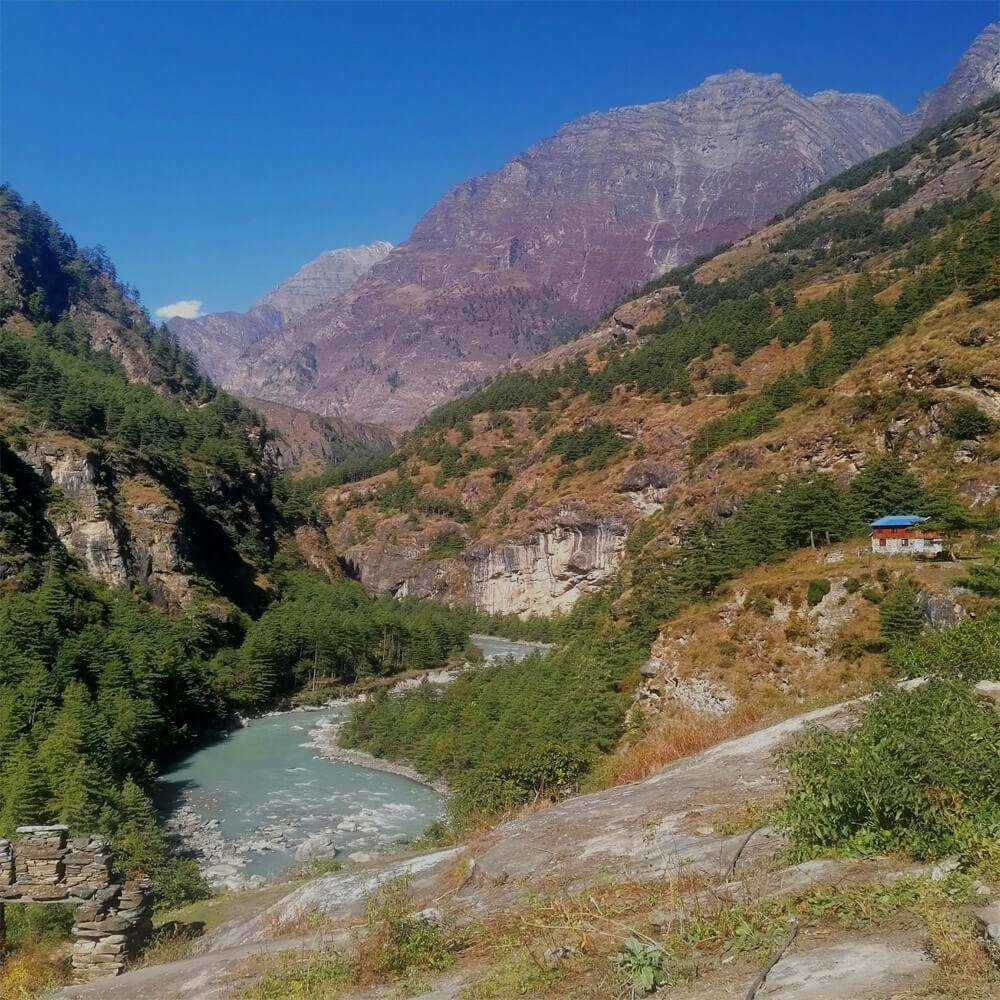
In the villages, you will come across good people. They adhere to unique traditions and customs. Be courteous, smile, and say "Namaste." When you enter houses or monasteries, take off your shoes.
Follow a Guide
This trek takes place in a remote location. There may be confusion in the trails. You can stay safe, find your way, and discover more about the locations you visit with the aid of a guide.
Enjoy the Trip
Take in more than simply the mountains. Talk to new people, take in the rivers, and listen to the birds. Although the walk is challenging, it leaves you with priceless experiences that will last a lifetime.
Beginner-friendly trekking routes vs. Manaslu Tsum
It is helpful to realize that certain treks are simpler than others if you are just learning about trekking in Nepal. To help you choose the best trekking route for you, let us compare easier trekking routes with the more challenging Manaslu Tsum Valley Trek.
Beginner-Friendly Treks
Beginner-friendly treks include the Everest View Trek, the Langtang Valley Trek, and the Ghorepani Ghandruk Trek. The paths are easier to trek, and these expeditions are typically shorter four to ten days. Along the way, you can find cozy beds, hot food, and teahouses. There is little possibility of becoming ill from altitude because you do not go very high. Additionally, these treks are near cities like Kathmandu or Pokhara, so assistance is readily available if needed.
Manaslu Tsum Valley Treks
The Manaslu Tsum Valley Trek takes 18 to 22 days, which is significantly longer. Since the trail is secluded, large communities are far away. It can be difficult to breathe because it rises to 5,160 meters. The trails are small, steep, and occasionally rough. The weather might be chilly and snowy, and there are not as many teahouses. For those who have some prior trekking expertise, this walk is excellent.
Which One is Best for You?
To learn how your body reacts to greater elevations, it is a good idea for beginners to begin with a low-intensity trek. You will still encounter friendly locals and take in breathtaking vistas. You can attempt more difficult treks like Manaslu Tsum once you are ready. It is a large trip with many of rewards, but being ready will make it more enjoyable.
Some of Frequently Asked Question
What is the difficulty level of Manaslu Tsum Valley Trekking?
It is quite difficult. You traverse high passes like Larkya La (5,160m) and walk for hours every day. Being physically fit is crucial.
Does this trek require me to be extremely fit?
You should be able to walk six to eight hours a day on uneven terrain while carrying a backpack, but you do not have to be an athlete.
Is High altitude trekking in Tsum Valley an issue?
Yes, that is a pretty high trip. Altitude sickness is a possibility for some people. It really helps to take rest days and walk carefully.
What types of trails exist?
The trails you will walk on are steep, rocky, and occasionally narrow. Near the pass, there are other river crossings, forest trails, and snow.
Is this journey suitable for beginners?
Those who have some trekking experience will do better. Beginners who are well-prepared and have a guide can attempt it.
What are the Technical difficulty of Manaslu trek?
The Manaslu Trek has the moderate technical difficulty. It includes high-altitude Larkya La Pass, landslides, and steep trails. However, no climbing or mountaineering experience is necessary.
Conclusion: Manaslu Tsum Valley Trek Difficulty
Though difficult of Manaslu Tsum Valley Trek is truly unique. You spend many days walking, climbing high mountains, and staying in tiny towns. The path may be rocky or slippery, the weather may be chilly, and the track may be steep at times. But every difficult step leads to something lovely: peaceful forests, large snow-capped mountains, and hospitable locals.
Along with that, you get to experience places that most tourists never see. The region is serene and culturally rich. You will sleep in teahouses, eat basic meals, and discover mountain life. Book your trek with Nepal Trekking Routes, for professional guides and logistic support. We are there to help you every step of the way.
You can succeed if you plan beforehand, go gently, and maintain your positive attitude. At the end, you will feel pleased and proud, even though it may have been difficult at times. You gain a strong heart and powerful legs from this walk. You will always remember this journey with a smile on your face.





